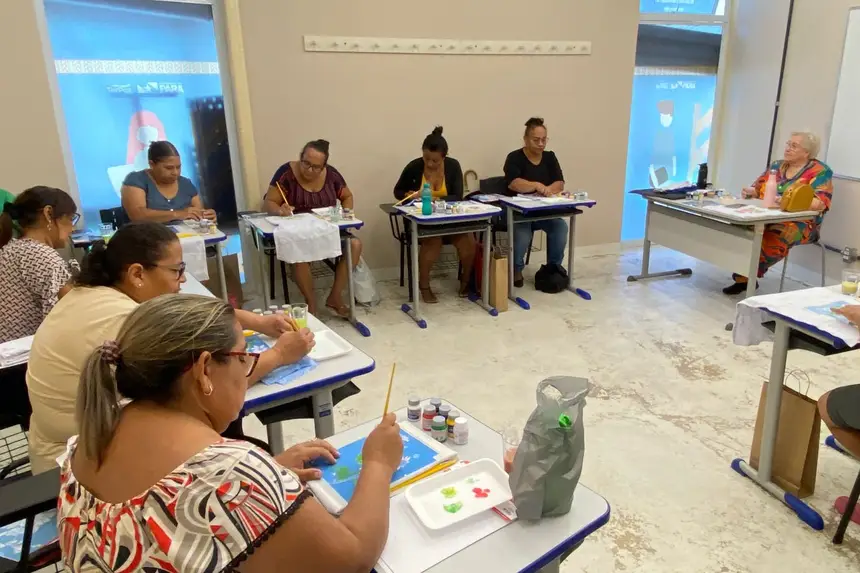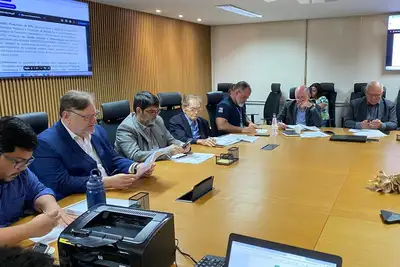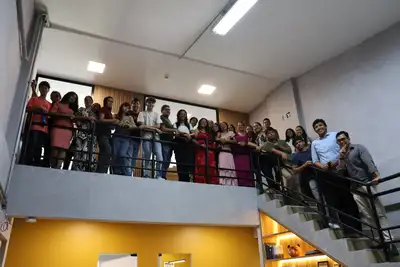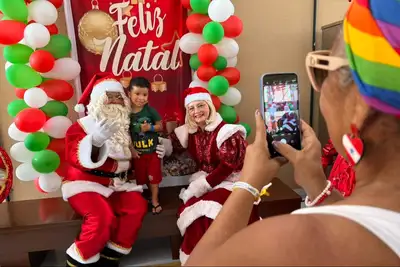Sedeme promotes fabric painting course at Usina da Paz Jurunas/Condor.
The initiative aims at the economic and social development of the community, through the promotion of the creative economy and income generation.
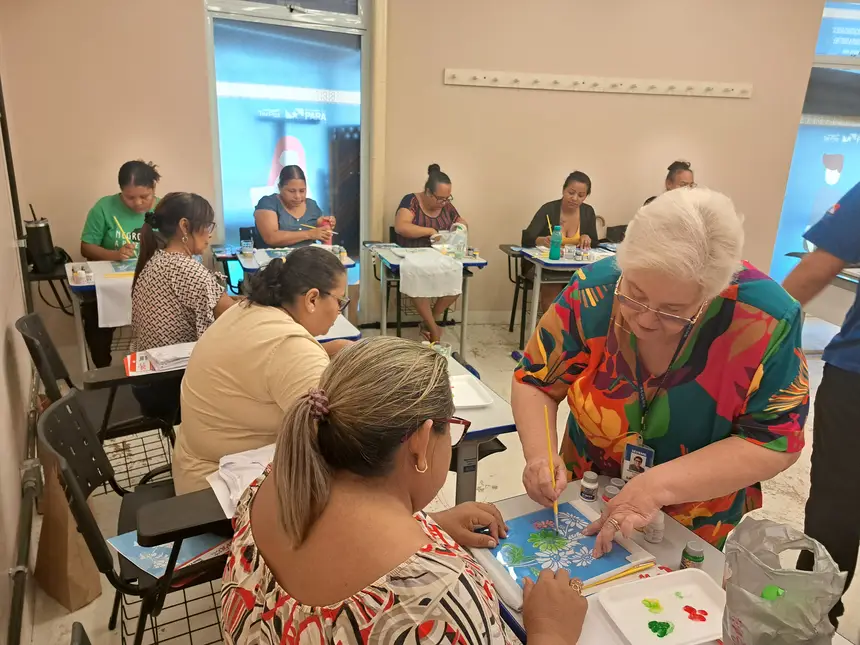
Residents of the communities surrounding Usina da Paz Jurunas/Condor participated on the afternoon of this Tuesday (19) in a fabric painting course aimed at personalizing t-shirts and napkins. The workshop, with a duration of four hours, was taught by visual artist and fashion designer Celeste Heitmann, and gathered ten participants.
Promoted by the Secretary of Economic Development, Mining and Energy (Sedeme), the initiative aims at the economic and social development of the community, through the promotion of the creative economy and income generation. The training combines technique, talent, and creativity, encouraging the artisanal production of exclusive pieces and opening new possibilities for entrepreneurship.
The course is part of Sedeme's activity schedule within the Usina da Paz Project (UsiPaz), which is part of the Territories for Peace Program (TerPaz), executed by the Government of Pará and coordinated by the Strategic Secretariat for Citizen Articulation (Seac).
“Sedeme maintains a continuous schedule of workshops within the Territories for Peace program, aiming to promote entrepreneurship, train the local workforce, and, as a result, the socioeconomic development of the communities served,” emphasizes the head of Sedeme, Paulo Bengtson.
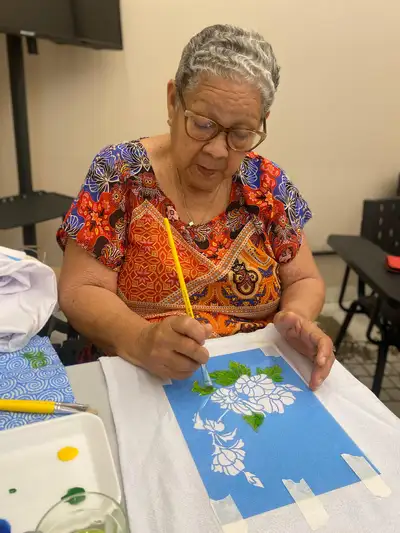
During the classes, participants learned to apply the stencil technique — cut-out acetate molds — combining this resource with artistic practices and creative solutions. According to artist Celeste Heitmann, this method democratizes access to art and allows fabrics to be personalized with a wide range of shapes and designs, making the creation process more dynamic and accessible.
Heitmann guides the students through the step-by-step of painting, starting with the application of the base or background, followed by mixing paints to create new shades. Additionally, she teaches shading techniques, adding dark and light areas to the design to create depth and contrast.
She also presents the different types of brushes, explaining their functions: the larger ones are used to cover wide areas, while the finer ones are ideal for outlines and details.
“In the course, I adopt a beginner-friendly approach, presenting materials, paints, and cut-out molds that facilitate painting and eliminate the need for freehand drawing,” highlights the artist.
Nazarena Souza, 69 years old, participates in the course and emphasizes that she sees the workshop as an opportunity to stimulate creativity, occupy her time, and distract herself. “The workshop is a way to keep the mind active and to do something that promotes well-being,” she comments.
She shares that she was raised in the Jurunas neighborhood, where she has lived for over 50 years, and highlights the importance of Usina da Paz as a space that cares for people. “Here we have leisure for all ages, courses in various areas for young people and adults.”
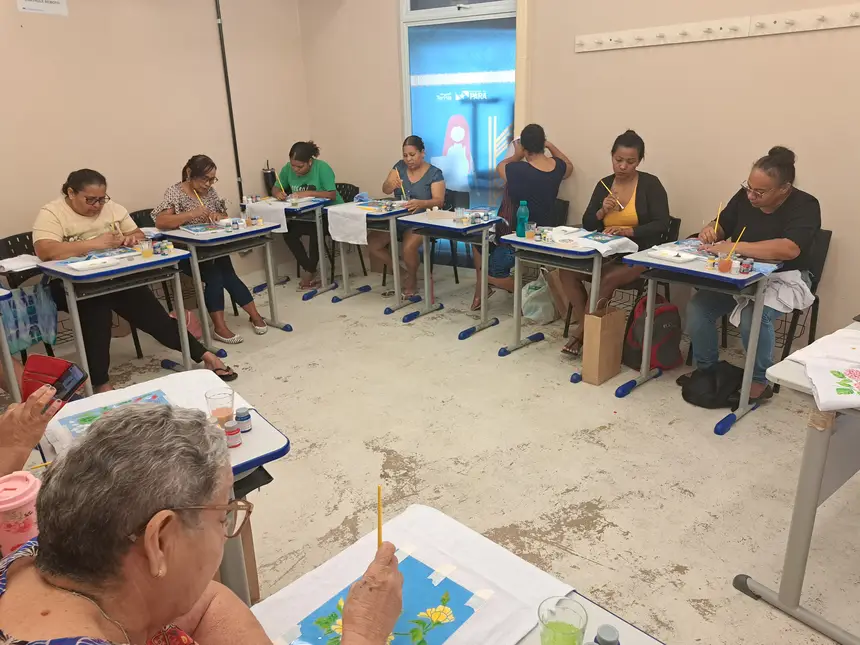
Mrs. Nazarena also emphasizes the health services offered on site: “At Usina, I have already had several medical consultations. We have dentists, and when we need to see a specialist, Usina itself refers us to the polyclinic.”
With affection, she concludes: “This space has come to make a difference in the life of the community. Here we have all the care we need to live well.”
Juliana Silva, 20 years old, sees the painting course as a valuable opportunity to gain knowledge from the renowned visual artist Celeste. “As soon as I heard about the workshop, I didn't think twice and signed up. Painting is something that enchants me, and I want to make the most of this chance to learn. Who knows, in the future, this art might become my profession,” she reveals.





